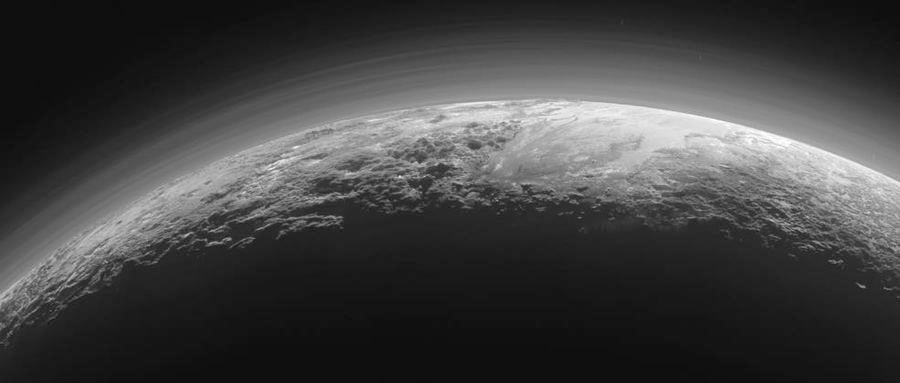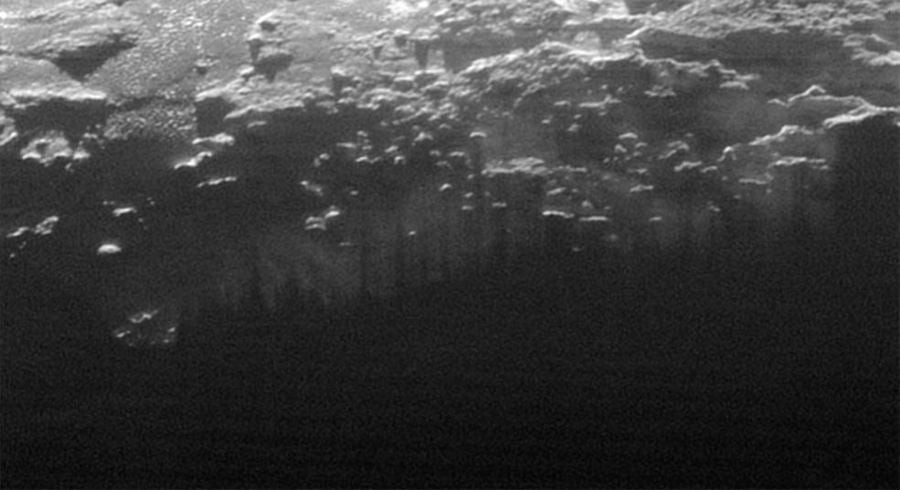NASA released more out-of-this-world images from the New Horizons spacecraft's fly-by of the Solar System's loneliest planet. Scientists were "stunned - not only for their breathtaking views of Pluto's majestic icy mountains, streams of frozen nitrogen and haunting low-lying hazes, but also for their strangely familiar, arctic look," NASA's website said.
New Horizons took this photo 15 minutes after its closest approach to Pluto on July 14, 2015. The spacecraft's camera took a look back toward the planet with the son glowing in the distant background. The result was a "near-sunset view of the rugged, icy mountains and flat ice plains extending to Pluto's horizon," NASA said.
"The smooth expanse of the informally named icy plain Sputnik Planum (right) is flanked to the west (left) by rugged mountains up to 11,000 feet (3,500 meters) high, including the informally named Norgay Montes in the foreground and Hillary Montes on the skyline," the description said. "To the right, east of Sputnik, rougher terrain is cut by apparent glaciers. The backlighting highlights over a dozen layers of haze in Pluto's tenuous but distended atmosphere. The image was taken from a distance of 11,000 miles (18,000 kilometers) to Pluto; the scene is 780 miles (1,250 kilometers) wide."
A second image gives a new view of Pluto's crescent with "an oblique look across Plutonian landscapes with dramatic backlighting from the sun," NASA said. "It spectacularly highlights Pluto's varied terrains and extended atmosphere. The scene measures 780 miles (1,250 kilometers) across."
A third photo shows a "near-surface haze or fog on Pluto," NASA said. "The setting sun illuminates a fog or near-surface haze, which is cut by the parallel shadows of many local hills and small mountains. The image was taken from a distance of 11,000 miles (18,000 kilometers), and the width of the image is 115 miles (185 kilometers)."
This fourth image is of Pluto's "Heart," NASA said. "The brilliantly white upland region to the right may be coated by nitrogen ice that has been transported through the atmosphere from the surface of Sputnik Planum, and deposited on these uplands. The box shows the location of the glacier detail images below."
Lead Stories' Trendolizer, being a robot, loves space exploration content and constantly scours social networks around the Solar System for the hottest trending content about it. Scroll down to see the latest.
















